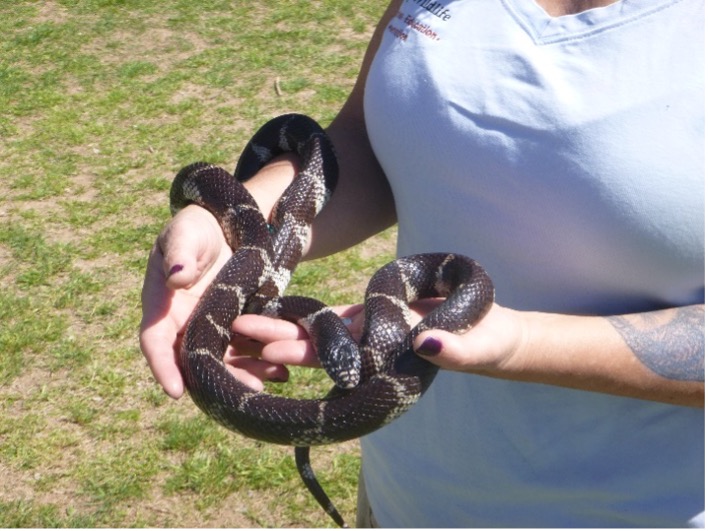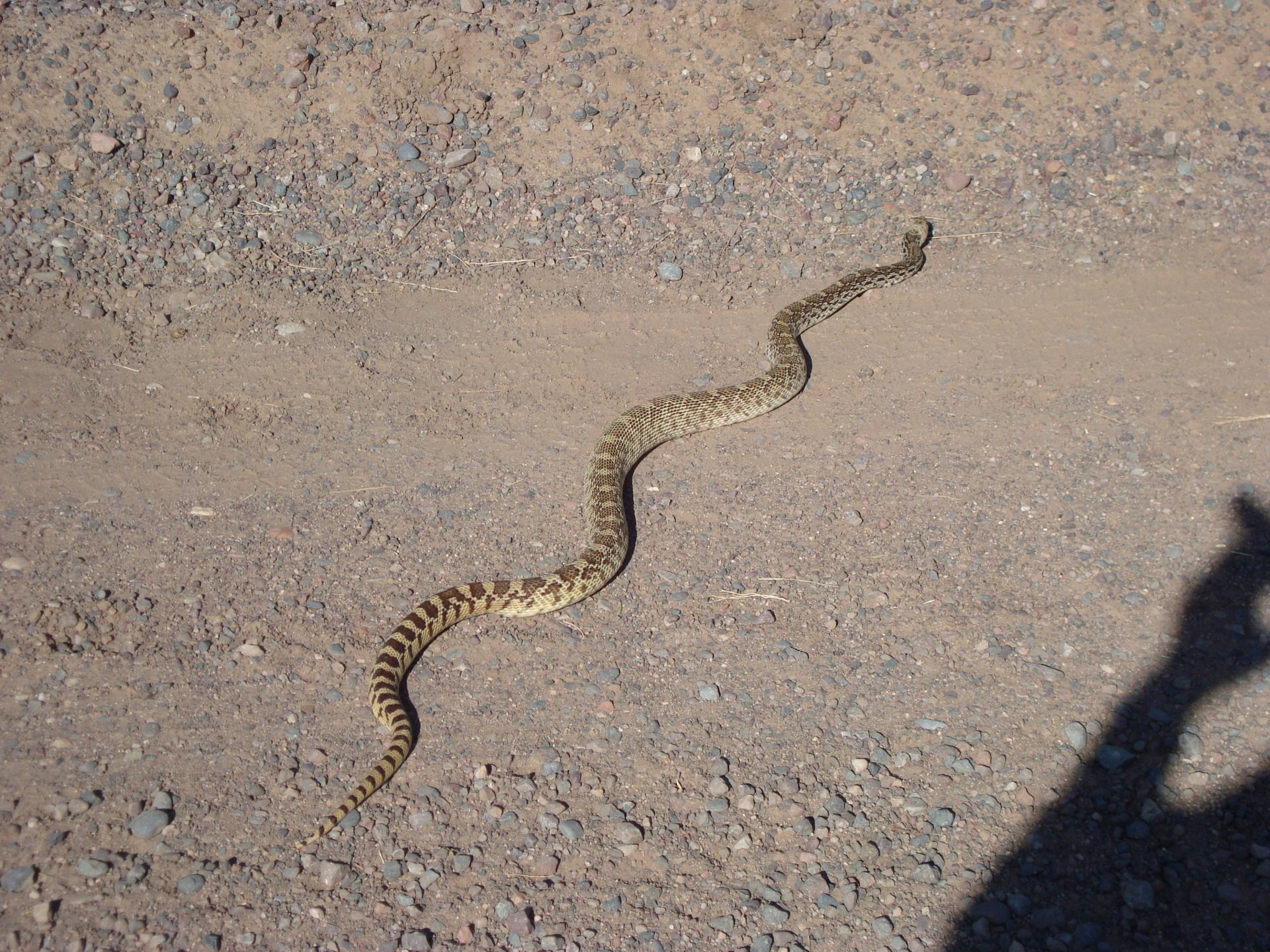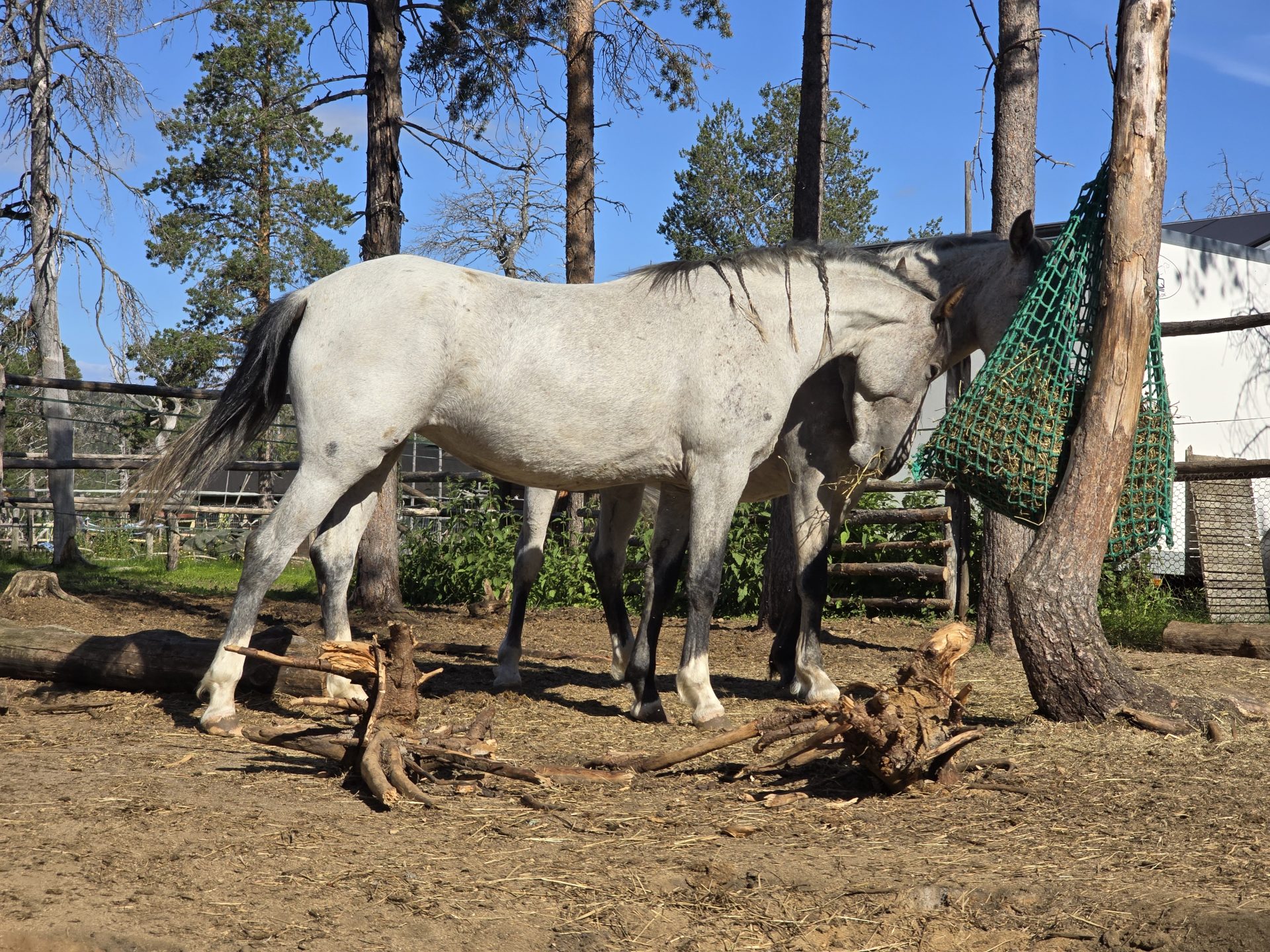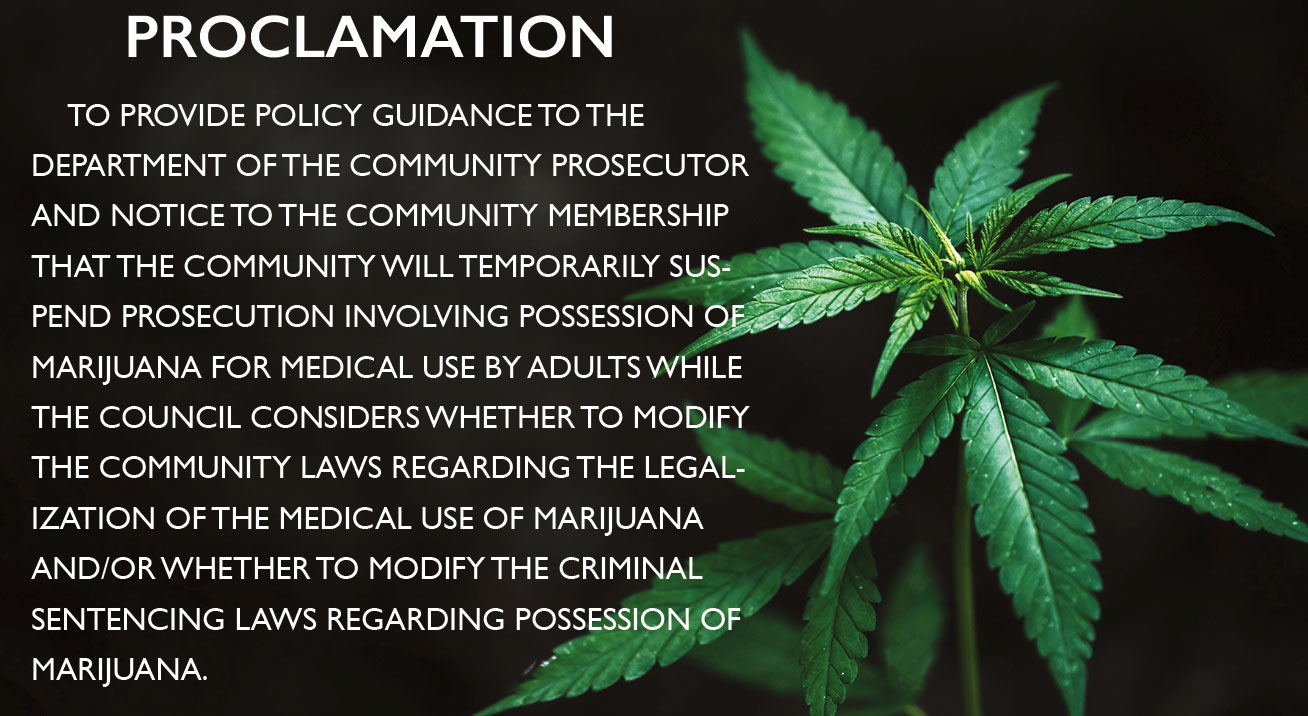VIEWS: 3240
August 8, 2024Snakes on the Range: The Three Most Common Snakes in the Community
During this time of year, it’s not uncommon to see snakes out in the field and around our homes. For many people, the sight and even the thought of snakes evokes hair-raising emotions.
Three of the most common snakes you will see on the Salt River Pima-Maricopa Indian Community are rattlesnakes, king snakes and gopher snakes, which are also known as bull snakes.
Snakes in Arizona are more active in the springtime after hibernating, and their activity typically continues through September and October.
Some snakes are more dangerous to humans than others, like the rattlesnake. In the Community, the two most commonly seen rattlesnakes are the Western diamondback and the sidewinder.
All of Arizona’s more than a dozen species of rattlesnakes are venomous; they use hollow teeth called fangs to inject their venom when they bite. Besides the trademark rattle, you can identify a rattlesnake by its triangular-shaped head.
In contrast, a gopher snake (Arizona’s longest snake) is shaped kind of like a bullet. The gopher snake may have coloring similar to that of a rattlesnake and will shake its tail like a rattlesnake, but the two snakes have distinct defense and attack behaviors.
“All snakes can bite, but gopher snakes don’t bite to inject venom,” said Brian Gewecke, senior environmental specialist/Range Management for the SRPMIC. “They are constrictors, which means they wrap their bodies around their food and squeeze until the food suffocates.”
Gewecke said that gopher snakes eat rodents like rats and mice. “That’s good for us, because rodents like to [chew on] electric wire insulation and water lines in our cars and houses. Rodents also chew holes in walls and carry fleas and disease.”
Like the gopher snake, all king snakes are non-venomous and kill their prey through suffocation, according to Gewecke. In fact, king snakes will kill and eat rattlesnakes, as they are immune to rattlesnake venom.



King snakes have many different colors and patterns with stripes or speckles. Here in the Community, the king snake is usually black and yellowish white, and it will usually grow to about 4 feet in length, with some reaching up to 6 feet.
“Due to their docile nature, many people have king snakes as pets!” said Gewecke. “Even a large king snake is a completely manageable pet.” In captivity, king snakes can live for well over 20 years, with 10 to 15 years being average.
Gewecke said that if you come across a king snake, don’t kill it just because it’s a snake. “There are good snakes and bad snakes. King snakes are good snakes that help protect us from dangerous rattlesnakes,” he said.
If you happen to see or hear a snake, take a step back and try to determine where it is. Figure out a safe way to get around it. If you are not sure, assume it is venomous. If you are safe, contact SRPMIC Animal Control or the Salt River Fire Department for removal of the snake. Rangers or Range Management might also be tasked with the removal.
Leave snakes alone, and they will leave you alone. If by chance you are bitten by a snake, seek immediate medical attention.
(Editor’s Note: Brian Gewecke contributed to this article.)







